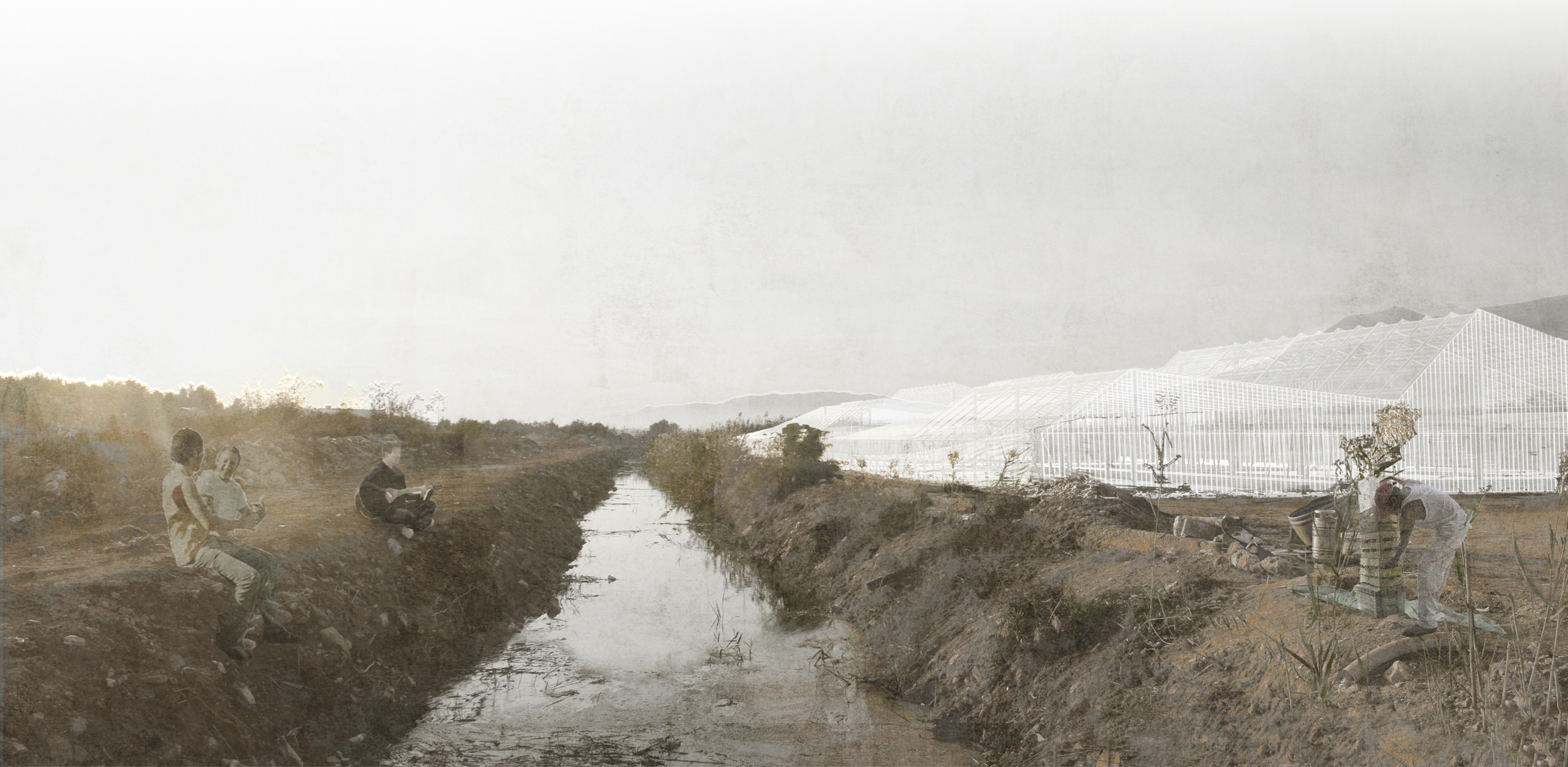
RASPA SIN APELLIDO-HABITAT ATTRACTORS IN THE AGROINDUSTRIAL SYSTEM OF "LA BALSA DEL SAPO"
ADVANCE ARCHITECTURE PROJECTS
UNIVERSIDAD DE SEVILLA
In Poniente Almeriense region in 1963, began the first experiments with “plastic coats” on crops using old structures of vineyards. This led to optimized vegetable production and water consumption. It is currently the area with the highest density of cultivation under plastic worldwide.
However, this causes different conflicts with the environment and landscape. Are mainly highlighted the massive generation of plastic waste and the overexploitation of aquifers to obtain irrigation water. The intervention proposed tries to reinvent the model that best adapts to the climatic conditions known as “raspa y amagado” with the aim of creating a unique space in the landscape where the plastic generated in the area will be recycled and studied through non-polluting processes for use in new experiments with crops.
Finally the new plastic would be used again in greenhouses, but colored being photoselective, to filter certain solar radiation depending on the need of each crop. The strategies that reinvent the current greenhouse model are: a greenhouse skin, the continuous water purification and the energy production.
Thanks the "greenhouse skin" formed by a double façade with dynamic air flows in summer to cool down the envelope and static in winter to store heat, this infrastructure become habitable. The water (from drainage, baths and rain) is moved in a closed circuit through a biological filter to be reused in the building. And finally, thanks to the wide solar collection area the building produces more energy than consumed. The remaining energy is given to the power grid.
